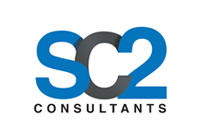Engagement in six basic steps


Leadership Development programs
SC² Consultants has constructed a format allowing managers and leaders to develop their leadership skills around these elements to foster employee engagement and obtain sustainable results. This highly adaptable format, stretching over a period of 4 to 6 months, combines:
- A structured feedback on current leadership behavior to discover strengths and weaknesses of one’s personal leadership styles
- Minimal class-room training around a few proven leadership tools and models
- Apply these tools and models, respecting one’s personal style, on a practical and concrete project grafted on the organization’s strategy execution goals and objectives

